New products at Crocus
by Sarah - August 8th, 2010.Filed under: Crocus, New Products.
Crocus has these new items today
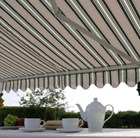
sun-awning-ascot-green-beige £159.99
Spend the summer relaxing in your garden with a sun awning. Extend your room into the garden and eat alfresco without the risk of a summer shower. With excellent shade it leaves you free to enjoy your garden all day long. The large awning also protects your family and interior from harmful UV rays, so you can just sit back and relax. If you want to enjoy the sun just roll it away. Ideal for people who don’t like smoking in the house!FeaturesCan be wound out to any length upto 2 metersOpens and winds up in secondsAdjustable angle according to your preferencesConstructed from a weather resistant powder coated metal, Aluminium arms and hard wearing polyester fabricStains can easily be washed offProtection from summer showersCan be removed for winter storage if required1-year Manufacturers warrantyEasy to fit See large ImageFixing Kit: We supply the brackets with expanding fixing bolts for fixing. All you need is a drill with a 14mm masonry bit, an adjustable spanner and a spirit level to ensure it’s straight.

common box – ball £24.99
Position: partial shadeSoil: fertile, well-drained soilRate of growth: slow-growingOther features: contact with the sap may cause skin irritationHardiness: fully hardyA pair of these tightly clipped box spheres look great flanking a set of steps, a doorway or a path. One of our recommended plants, they’re perfect for planting in a large terracotta pot in a partially shady site, where the glossy, dark-green leaves provide all year foliage interest and structure. Box are happy growing in a sunnier spot, but the combination of dry soil and full sun may encourage poor growth and leaf scorching. If you have sandy soil it is best to keep them in a partially shady spot in the garden.Garden care: Ensure that the soil or compost is never allowed to dry out. Carefully cut back plants grown as hedges or topiary in mid- or late summer. Carry out rejuvenative pruning in late spring. After pruning apply a top-dressing of a balanced slow-release fertiliser such as blood, fish and bone (organic) or Osmacote (inorganic) around the base of the plant, ensuring that none touches the leaves or stems.
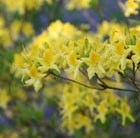
deciduous azalea £15.99
Position: partial shadeSoil: moist, well-drained, humus-rich, acid soil or ericaceous compostRate of growth: fast-growingFlowering period: May and JuneFlower colour: yellowOther features: vivid bonfire shades in autumnHardiness: fully hardySweetly scented, yellow, funnel shaped blooms in May and June and mid green leaves, which take on vivid bonfire shades in autumn. This vigorous, deciduous azalea looks great planted in a mixed border with other evergreen trees or shrubs. As long as it’s given moist, well-drained acid soil it will tolerate full sun.Garden care: Avoid planting too deeply. Apply a generous 5-7cm (2-3in) mulch of leaf mould around the base of the plant each spring.
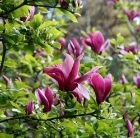
magnolia £14.99
Position: full sun or partial shadeSoil: moist, well-drained, slightly acidic soilRate of growth: slow-growingFlowering period: June to SeptemberFlower colour: dark purple-redOther features: slightly fragrant flowersHardiness: fully hardyA stunning, deciduous magnolia with a compact habit and dark purple-red flowers which appear from an earlier age than most magnolias. The goblet-shaped blooms are produced from early summer, and then intermittently into autumn. A lovely shrub for a sunny or partially shaded spot out of strong winds.Garden care: Requires minimal pruning. Remove any broken, diseased or crossing branches in midsummer. The best time to plant is in April, adding plenty of peat to the planting hole, in a sheltered spot. Mulch in spring with manure and leafmould, especially on dry soils
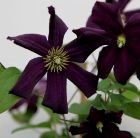
clematis (group 3) £9.99
Position: full sun or partial shadeSoil: fertile, well-drained, neutral soilRate of growth: average to fastFlowering period: July to SeptemberFlower colour: deep violetHardiness: fully hardyAn unusual clematis with very deep violet, almost black flowers with contrasting pale yellow stamens. The blooms are produced from July through to September and looks particularly attractive when planted against a light background or growing through yellow-leaved shrubs. Prune back in early spring to a pair of strong buds about 20cm above ground level.Garden care: In early spring cut back the previous year’s stems to a pair of strong buds about 15-20cm (6-8in) above ground-level and apply a slow-release balanced fertiliser and a mulch of well-rotted garden compost around the plant, avoiding the immediate crown.
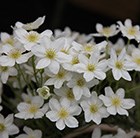
clematis (Group 1) £9.99
Position: full sunSoil: fertile, well-drained, neutral soilRate of growth: average Flowering period: April Flower colour: pure whiteOther features: ideal container plantHardiness: frost hardy (will need winter protection)A profusion of small, waxy, pure-white flowers on purple-tinted stems appear in April amid finely cut, deep green leaves. This dwarf, evergreen clematis requires a sunny site and protection against frosts. In all but the warmest areas of the country it’s best grown in a conservatory or cool greenhouse in a large patio pot.Garden care: No routine pruning is necessary. If the spread of the plant needs to be restricted prune immediately after flowering, cutting back overlong shoots to healthy buds. Apply a slow-release balanced fertiliser and a mulch of well-rotted garden compost around the base of the plant in early spring.

clematis (group 3) £8.99
Position: full sun or partial shadeSoil: fertile, well-drained, neutral soilRate of growth: fast-growingFlowering period: May to AugustFlower colour: wine-red with pink veiningHardiness: fully hardyMasses of small, wine-red flowers with deep pink veining from May to August. An excellent climber that makes a good partner for a climbing rose, shrub or tree in full sun or partial shade. An easy-to-grow variety, it is resistant to clematis-wilt and damage from moderate winds.Garden care: In early spring cut back the previous year’s stems to a pair of strong buds about 15-20cm (6-8in) above ground-level and apply a slow-release balanced fertiliser and a mulch of well-rotted garden compost around the plant, avoiding the immediate crown.
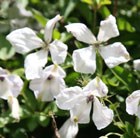
clematis (group 3) £8.99
Position: full sun or partial shadeSoil: fertile, well-drained, neutral soilRate of growth: fast-growingFlowering period: July to SeptemberFlower colour: whiteOther features: flowers are perfect for arrangingHardiness: fully hardyOpen, bell-shaped white flowers with purplish-black centres and grey-green leaves. This late summer flowering clematis is ideal for growing through trees, shrubs and climbing roses. The elegant white flowers with bright green tips are much sought after by flower-arrangers. Resistant to clematis wilt and tolerates a certain amount of wind.Garden care: In early spring cut back the previous year’s stems to a pair of strong buds about 15-20cm (6-8in) above ground-level and apply a slow-release balanced fertiliser and a mulch of well-rotted garden compost around the plant, avoiding the immediate crown.
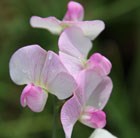
everlasting sweet pea (syn. Pink Pearl) £8.99
Position: full sun or partial shadeSoil: fertile, humus-rich, well-drained soilRate of growth: average to fast-growingFlowering period: June to SeptemberHardiness: fully hardyEver popular, this plant is smothered in showy sprays of purplish-pink, sweet pea-like flowers from June to September among grey-green leaves. A vigorous, perennial climber, it looks lovely scrambling over a sunny wall, although it needs to be tied into supports. Unlike the annual sweet pea, it has no fragrance.Garden care: Incorporate lots of well-rotted organic matter in the planting hole. Pinch out the shoot tips to encourage bushy growth and tie in new shoots to a support. Cut back the plant to ground level in early spring.
clematis (group 3) £8.99
hebe £8.99
clematis (group 1) £8.99
iris £7.99
Armenian cranesbill £6.99
Corsican hellebore £6.99
stinking hellebore £6.99
nodding onion £4.99
curled cress £0.99






